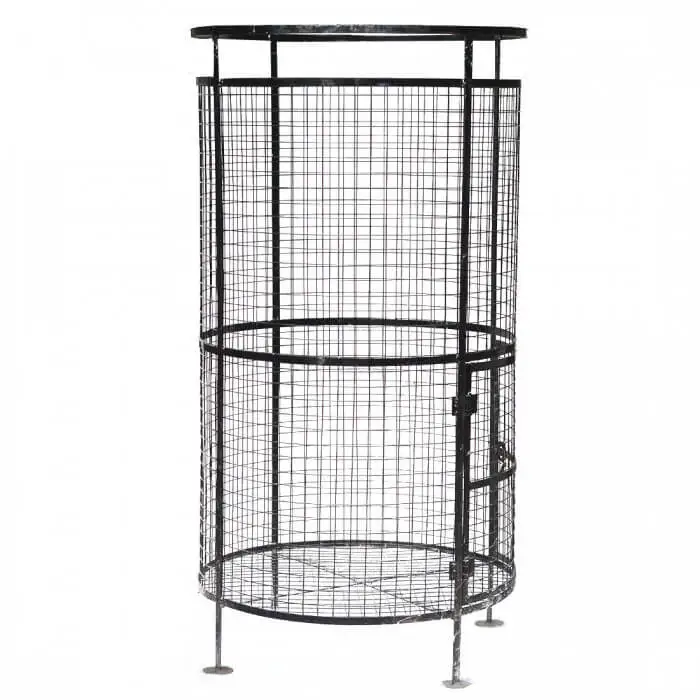Leaf Mold compost, as suggested by the name, is a compost, fertilizer which mainly constitutes leaves. The main content of this compost is Dried Fallen Leaves from trees and plants.
Unlike other composts, which are usually a byproduct of bacterial and worm decomposition, leaf mold is a product of fungal decomposition. Leaf mold helps in making soil nutrient rich and also helps enhance the soil structure.
Table of Contents
Should you leave fallen leaves in the soil with plants?
You should NEVER LEAVE the fallen leaves in the soil with plants, either pick them up and put in compost or just throw them away.
Leaves are very time consuming when it comes to decomposition which makes them a perfect spot for bacterias like slugs to hide. They later get on the plant and destroy the whole plant.
How to make Leaf Mold Compost
Making Leaf Mold is not very big of a task. it just requires a lot of patience in preparing Leaf Mold Compost. You can follow the following process to prepare perfect Leaf Mold Compost.

Mostly Leaf Mold is prepared in a wired cage that is having a base at the bottom of it. But you can also do it in a fully closed bin also.
The Process
- Collect all the fallen and dead leaves from your garden or wherever you can collect them.
- Pour them inside the bin or cage whatever is your preferred way of composing leaves.
That’s it, thats literally all you have to do to start the preparation of the compost.
How long does it take to prepare?
Decomposition by fungus is a very time taking process. It can take upto 12-24 Months in preparing Leaf Mold Compost from broken leaves depending on the quantity of leaves. However, there are a few things that you can do to make the process a little faster.
Things you can do to Speed Up Leaf Mold Composting
- Use Shredded Leaves: Break down the leaves by chopping them down and breaking or crushing them, this will help bacteria gain more area to work on and decompose them faster.
- Keep the Compost Moist: Make sure that you keep the bin/cage somewhere it can consume rainwater, or you have to keep it moist and it takes a lot of water.
- Keep Away From Too Much Direct Sunlight: Keep the compost in an area which stays in shade for the most part of the daytime.
- Add Nitrogen: Fallen dead leaves are “browns” which are high in Carbon. So nitrogen is the limiting element here. Adding some nitrogen into the compost will help micro-organisms get more food for themself. Grass Clippings are perfect to add to the process.
How to use Leaf mold Compost
Leaf Mold can be used as you use a regular fertilizer. There are few ways you can use it:
- Sprinkle It Over the Soil: Just sprinkle it in your garden and the soil will slowly absorb its nutrients.
- Dig It Into the Soil: Make a small hole in the soil and put it inside it and cover it with soil. Make sure that you don’t dig deep enough to touch the roots. Just dig a small hole. It will spread across the plant every time you will water it and soon will completely mix with the soil.
- Very Good For Bonsai Trees: Leaf Mold is considered an excellent compost for Bonsai Trees as Bonsai Trees show good results when Leaf Mold is used as Compost for them.
Benefits of Using Leaf Mold Compost
- Easy to Prepare: First of all the preparation is super easy. If you can wait enough time, this is the easiest thing to do, you can get leaves from your garden and just keep putting them in a bin, it’ll take its time and be prepared.
- Helps Improve Soil Structure: Leaf Mold compost helps enhance soil structure of the soil which is very beneficial for the root system of the plant.
- Improves Water Retention Power of the Soil: The water retention power of Leaf Mold is very high which makes it very beneficial for plants which require more water.
- Composting waste is Earth Friendly: Organic waste is becoming is concern now, it’s better to use the waste as much as we can as responsible citizens and living being.
- Too Many Nutrients for Plants: It contains 15 essential nutrients required by plants, especially plants which grow fruits and vegetables, Leaf Mold is a good compost for those plants.




